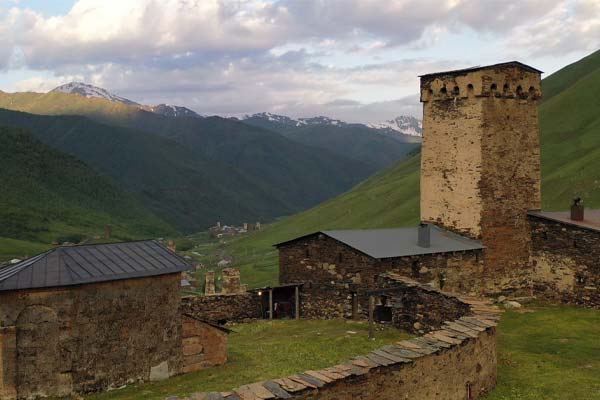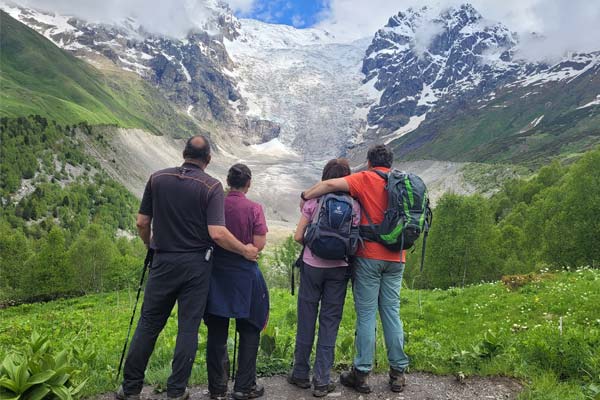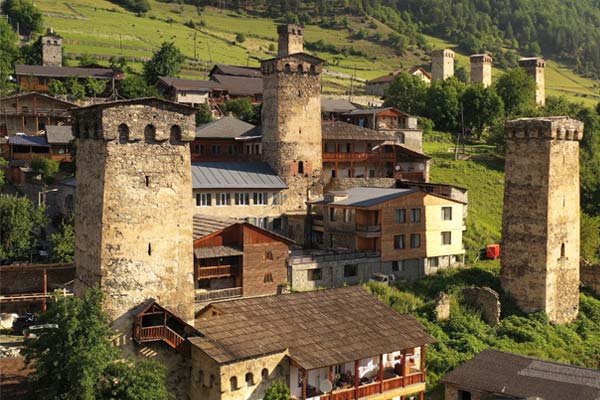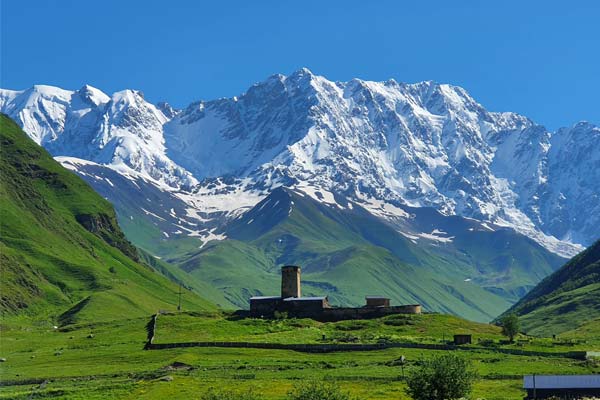|
Lamaria of Ushguli Church and monastery of the Virgin Mary, also known as Lamaria of Ushguli, is the highest church in Georgia and the most popular photo destination in Svaneti. It has a perfect location at around 2,200 metres above sea level, and the landscape behind the church, with snow-capped mountains over 5,000 metres high, is simply phenomenal. But would the church be interesting if it were not set in this magnificent landscape? Absolutely, because Lamaria, with its thousand-year history, has much more to offer than just a well-chosen location. The name Lamaria refers to Mary, the mother of God, but Lamaria was once one of several goddesses of the pagan people. She was the goddess of fertility and the protector of agriculture, especially grain. Dates of construction There is no written evidence of when the church was built, but architecturally it belongs to the churches of the 9th and 10th centuries. Since fragments of 10th century frescoes are still preserved in the church, it is assumed that it was built in the 10th century at the latest. Architecture of the church The church of Lamaria was built in the 9th and 10th centuries from well-cut sandstone ashlars. Architecturally, it is a small basilica with two annexes on the west and south sides. There is little decoration on the exterior, but on the west façade, above the small window, there is a cross carved into the stone with Georgian script from the 11th century, which mentions a woman called Mirandukht as the founder of the church. You enter the church through the low entrance of the southern annex and after a few metres you reach the entrance of the central room, which is located to the west. Frescoes The oldest painting in the church dates from the 10th century, of which some ornamentation remains on the stone iconostasis. It seems that initially only the iconostasis was painted. At the end of the 10th century and the beginning of the 11th century, the entire interior was painted with various biblical scenes. The scene of the Crucifixion of Jesus is noteworthy, in which the wrists of the figures are enlarged to emphasise their gestures. The facial features of the figures are also very expressive and we can see the typical Swabian style of painting. In the church of Lamaria, the master departed from classical icon painting, for example, the hand of the Virgin Mary is not on her face but on her head, in order to make her sorrow more vivid and closer to everyday life. The next phase of painting dates from the 12th century. The frescoes of St George and St Theodore, both depicted as warriors on horseback, belong to this period. The last phase of fresco painting dates from the 13th century and is the best preserved. It includes the painting of the eastern apse, above the altar, the typical Swanean Deesis, where Jesus is depicted with Mary, as well as John the Baptist and the two archangels. Below the deesis are the Fathers of the Church. Under the vaults are depictions of the Nativity and Pentecost. The church is rich in inscriptions and graffiti written on the walls by churchgoers, which have now acquired historical significance as they are filled with various Georgian letters dating from the 10th to the 18th century. On the site of the church there is a Svanetian tower from the 10th-11th centuries with two outbuildings containing living cells and service rooms. Lamaria in the present The church is in use and can be visited at any time. Interesting facts Upper Svaneti was free for several centuries, without any rulers. However, Prince Dadeschqeliani managed to break the resistance and bring Ushguli under his rule through brutal means. At a meeting with the villagers of Ushguli, the details of which were still to be worked out, the cruel prince was killed by the villagers of Ushguli in the Lamaria Church. It is important to know that there was a blood feud in Svanetia at that time, and if a certain person had done the deed, his whole family would have been wiped out by the Dadeschqelianis' relatives, but the people of Ushguli found a clever solution. They prepared the gun with a long rope on the trigger behind the wall and aimed it at the place where the lord should sit. At a certain signal, the men of different families would stand up, go to the hiding place and pull the trigger together. The stone square where the prince sat can still be seen at the church. On following trip, you will visit Lamaria
from 1,750 EUR
|






